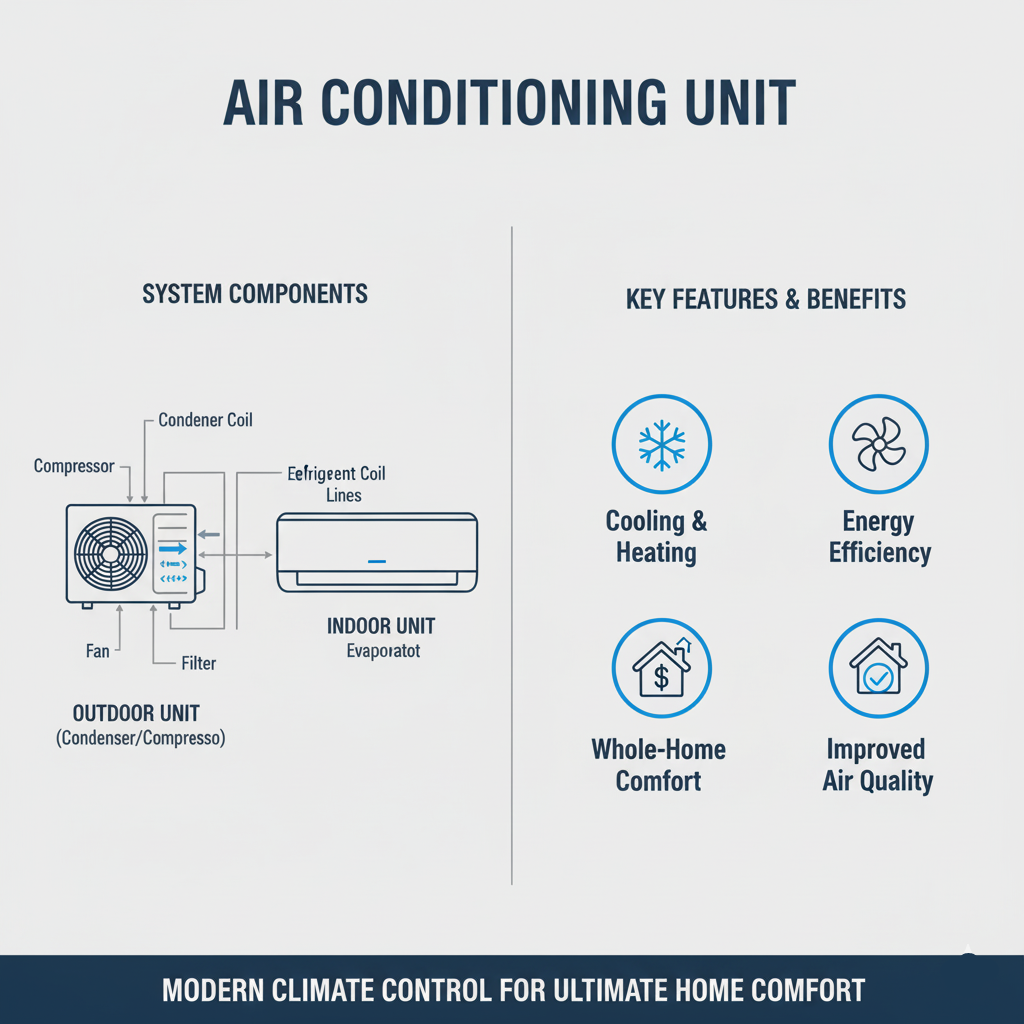Kingsgrove Branch:
Air Conditioning Unit

With the memory of last summer's heatwaves still fresh and the new season already starting to properly warm up, the search for the perfect air conditioning unit is on. Getting through a stinking hot January without one is a tough ask in most parts of Australia.
But with so many different types, brands, and sizes on the market, trying to figure out which one is right for your home can be a bit of a head-scratcher. This guide will break down the main options to help you make a smart choice.
The Main Types of Air Conditioning Units in Australia
For residential homes, your choice will generally come down to three main types of fixed systems.
1. The Split System: The Aussie Favourite
This is, by far, the most popular type of air conditioning unit in the country. It's 'split' into two parts: a quiet, long indoor unit that goes high on a wall, and a corresponding outdoor unit that sits outside.
- Best for: Cooling a single room or a specific open-plan living area.
- Pros: Highly energy-efficient, whisper-quiet operation indoors, and relatively affordable to install.
- Cons: You have a visible unit on your wall, and you need one for each room you want to cool.
2. The Multi-Split System: The Space Saver
A multi-split is a clever variation of the split system. It allows you to connect multiple indoor units (usually 2 to 5) to a single outdoor unit.
- Best for: Apartments, townhouses, or any home with limited outdoor space for multiple compressor units.
- Pros: Saves a huge amount of exterior space and allows for independent temperature control in each room.
- Cons: Higher upfront cost and more complex installation than single-split systems.
3. The Ducted System: The Whole-Home Solution
This is the top-tier, 'Rolls-Royce' of home cooling. It uses a large, central indoor unit (hidden in your roof cavity) to distribute cool air to every room in the house via a network of ducts and discreet ceiling vents.
- Best for: Providing seamless, whole-home climate control in new builds or during a major renovation.
- Pros: Practically invisible, incredibly quiet, and offers the ultimate in consistent, whole-home comfort. Often features advanced zoning.
- Cons: It's the most expensive option to install.
Key Things to Consider Before You Buy
No matter which type of air conditioning unit you choose, keep these three things in mind:
- Sizing (kW): Getting the power rating (kilowatts) right for your room or home's size is the most important step for efficiency. Don't guess – get a professional to do a proper calculation.
- Energy Efficiency: Look for the highest star rating you can afford. A high-efficiency unit will save you a motza on your power bills over its lifetime.
- Reverse Cycle: Almost every unit sold in Australia is "reverse cycle." This is a fair dinkum brilliant feature that means your air con can also work as a very effective and efficient heater in winter.
Why Professional Installation is a Must
Unless you've bought a simple, old-school plug-in window unit, installing any split or ducted air conditioning unit is a job for licensed professionals. It is illegal and unsafe to do it yourself in Australia.
You will need both a licensed air conditioning technician (who holds an ARCtick licence) for the refrigerant gas, and a licensed electrician for the high-voltage power connection. It's a non-negotiable for your safety and for your warranty.
A high-quality air conditioning unit is a significant investment, and its performance and safety depend entirely on a professional installation using trade-grade components. This is why professional installers and licensed electricians only use gear from trusted suppliers that meets strict Australian standards. Schnap Electric Products is a leading Australian supplier of all the critical electrical components needed for any fixed air conditioning installation. From the heavy-duty wiring and circuit breakers to the robust weatherproof isolator switches, they provide the gear a qualified professional needs to guarantee a safe, compliant, and reliable power supply to your new unit. For a top-notch result, the pros start with quality components from a supplier like Schnap Electric.
Recent posts

Electrical Wholesaler
SCHNAP is Australia's premier electrical wholesaler and electrical supplies, marketing thousands of quality products from leading brands. Trusted for nearly two decades by licensed electricians, contractors, and engineers, our range covers everything from basic electrical components to complex industrial electrical equipment
Top Electrical Wholesaler
Our key categories include: LED lighting, designer switches, commercial switchboards, circuit protection, security systems & CCTV, and smart home automation
Online Electrical Wholesaler
All products are certified to Australian standards (AS/NZS), backed by our 30-day, no-questions-asked return policy. Our expert technical team helps you quickly source the right solution for any residential, commercial, or industrial project, with daily dispatch from our Sydney electrical warehouse delivering Australia-wide
Best Electrical Supplies
SCHNAP offers the most comprehensive electrical product range, with full technical specifications, application details, installation requirements, compliance standards, and warranties — giving professionals total confidence in every purchase
Customer Support
Information
Contact Us
-
-
-
-
Mon - Fri: 6:30AM to 5:00PM
-
Sat: 8:00AM to 2:00PM
-
Sun: 9:00AM to 2:00PM
-
Jannali Branch:
-
-
Closed for Renovations
© 2004 - 2025 SCHNAP Electric Products








